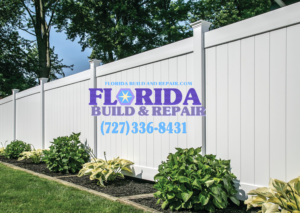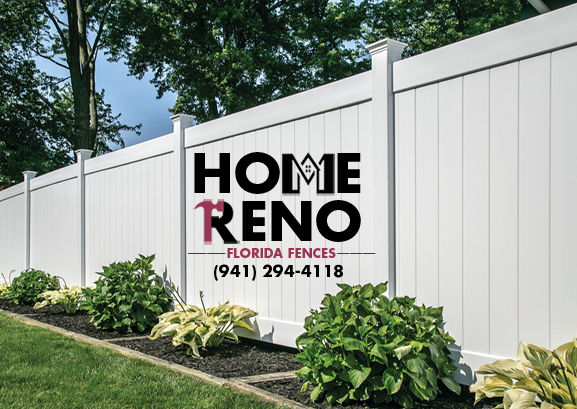Are Bamboo & Composite Privacy Fences in Largo Eco-Friendly Alternatives?
- Fence Largo, Largo, Privacy Fence Costs Largo, Privacy Fence Installation Largo, Privacy Fence Materials & Comparisons, Privacy Fences, Vinyl Privacy Fence Contractor Largo, Wood Privacy Fence Service Largo
- Best Privacy Fence Installation Contractor Largo
- Vinyl Privacy Fence Costs in Largo
- Privacy Fence Maintenance & Longevity
Yes, bamboo and composite privacy fences are eco-friendly alternatives for homeowners in Largo looking to enhance their outdoor spaces sustainably.
Bamboo Fencing
Bamboo fencing offers several environmental benefits:
Sustainability: Bamboo is one of the most sustainable and rapidly renewable materials available. It reaches maturity in just 3-5 years, significantly faster than traditional timber.
Carbon Sequestration: Bamboo absorbs more carbon dioxide and releases 35% more oxygen into the atmosphere compared to equivalent hardwood trees, helping mitigate climate change.
Low Resource Requirements: Bamboo cultivation requires minimal water and no pesticides, supporting biodiversity and soil health.
Biodegradability: At the end of its life cycle, bamboo fencing can decompose naturally without leaving harmful residues.
Composite Fencing
Composite fencing also provides eco-friendly advantages:
Recycled Materials: Many composite fences are made from a blend of recycled wood fibers and recycled plastics, diverting waste from landfills.
Reduced Deforestation: By using reclaimed wood fibers, composite fencing helps preserve forests by reducing the demand for virgin timber.
Longevity: Composite fences are highly durable, often lasting 25 years or more with minimal maintenance. This reduces the need for frequent replacements and conserves resources in the long term.
Chemical-Free Maintenance: Unlike wood fences, composite fencing doesn’t require painting, staining, or sealing, eliminating the use of potentially harmful chemicals.
Environmental Impact
Both bamboo and composite fencing contribute to a reduced carbon footprint compared to traditional fencing materials. They require less energy for production and transportation, and their longevity means fewer replacements over time.
For Largo residents concerned about sustainability, both options offer eco-friendly alternatives that combine durability, low maintenance, and environmental responsibility. When choosing between the two, consider factors such as local climate, desired aesthetics, and specific sustainability goals to determine the best fit for your property.

Best Materials for Privacy Fence Installation in Largo
When it comes to installing a privacy fence in Largo, the choice of material is crucial for both functionality and aesthetics. Here are some of

Largo Wood Privacy Fence Installation for Beginners
Largo Wood Privacy Fence Installation for Beginners Installing a wood privacy fence can be an achievable DIY project for beginners. Here’s a step-by-step guide to

Best Tools for a Largo Wood Privacy Fence Installation
Installing a wood privacy fence in Largo requires a variety of tools to ensure a successful and efficient project. Here are the essential tools you’ll

How to Choose the Best Vinyl Privacy Fence Contractor in Largo
Choosing the best vinyl privacy fence contractor in Largo involves several key considerations: Experience and Expertise Look for contractors with extensive experience in vinyl fence

Wood Privacy Fence Contractor Largo
A fair price for hiring a wood privacy fence contractor in Largo typically ranges from $20 to $50 per linear foot installed, with the average

Wood Privacy Fence Service Largo
When considering wood privacy fence services in Largo, there are several key factors to keep in mind: Professional Installation Opting for professional installation offers numerous

Best Privacy Fence Installation Contractor Largo
Hiring a professional contractor for privacy fence installation in Largo offers several significant benefits that enhance both the quality of the installation and the overall

Vinyl Privacy Fence Costs in Largo
Vinyl privacy fences typically cost between $25 and $60 per linear foot installed, with the average cost ranging from $40 to $60 per linear foot

Vinyl Privacy Fence Installation Largo
Vinyl privacy fence installation in Largo, FL is a popular choice for homeowners and businesses due to its durability, low maintenance, and aesthetic appeal. Here’s

Are Bamboo & Composite Privacy Fences in Largo Eco-Friendly Alternatives?
Best Privacy Fence Installation Contractor Largo Vinyl Privacy Fence Costs in Largo Privacy Fence Maintenance & Longevity Yes, bamboo and composite privacy fences are eco-friendly



